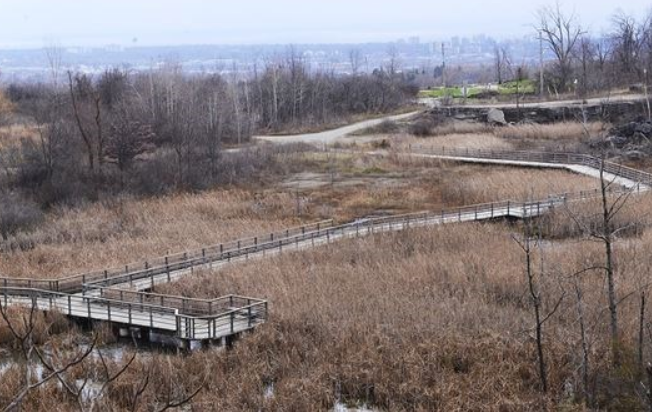 By Staff
By Staff
January 27th, 2023
BURLINGTON, ON
Parks Canada has announced a contribution of more than $3.5M to Conservation Halton and partners in support of the Cootes to Escarpment EcoPark System.
Funds will be used for collaborative efforts to restore ecological corridors between Cootes Paradise and the Niagara Escarpment in Hamilton and Burlington. The contribution to the Cootes to Escarpment EcoPark System is funded by the Parks Canada National Program for Ecological Corridors.
The program was launched in 2022 and this is the first initiative that it has funded. The funding announcement was made today by the Honourable Steven Guilbeault, Minister of Environment and Climate Change and Minister, along with Dr. David Galbraith, Head of Science at the Royal Botanical Gardens of Burlington and Hamilton, Ontario.

A massive undertaking that gets a little bit better every year.
The Cootes to Escarpment EcoPark is 2,200 hectares of natural area, including forests, wetlands, creeks and shoreline, which is protected by a partnership of government and not-for-profit groups, including Conservation Halton, Hamilton Conservation, Royal Botanical Gardens, Bruce Trail Conservancy, Halton Region, City of Burlington, City of Hamilton, Hamilton Naturalist’s Club and McMaster University. As a partner, Conservation Halton uses sustainable practices to protect, preserve, and restore this area, support the ecosystem services it provides and promote responsible appreciation of nature.

A walking trail: This is what a wetland is supposed to look like
“We are proud to be a partner in the Cootes to Escarpment EcoPark System and to receive this funding from Parks Canada,” says Hassaan Basit, President & CEO, Conservation Halton. “For nature to thrive, especially in complex regions like ours where development needs to be in balance with the area’s rich biodiversity, it needs to be connected. Conservation Halton has been working with diverse community groups to help prepare our environment and communities to be more resilient to climate change and we are honoured to have the federal government’s support on this important initiative. Minister Karina Gould has been a champion for this project for close to a decade and the collaboration we have had with all of our partners is what turns ideas like these into reality.”
Protecting and restoring natural areas plays an important role in addressing climate change and biodiversity loss, but for these efforts to be most effective, the areas must be strategically planned, located, and connected, like the Cootes to Escarpment EcoPark. Ecological corridors support the movement of plant and animal species between natural areas, and allow other natural processes, like pollination, to take place. This approach to conservation also provides more opportunities for community members to access, enjoy, and appreciate nature.

There may not be a count of the number of birds in the Cootes Eco Park
Conservation Halton is the community-based environmental agency that protects, restores and manages the natural resources in its watershed. The organization has staff that includes ecologists, land use planners, engineers, foresters and educators, along with a network of volunteers, who are guided by a Board of Directors comprised of municipally elected and appointed citizens. Conservation Halton is recognized for its stewardship of creeks, forests and Niagara Escarpment lands through science-based programs and services.
While federal funding is important, even more important are the changes the Ontario government is making.
In a massive overhaul of urban development planning, the Ontario government looks to take power away from the agencies that help prevent flooding — again.
The legislation will repeal 36 specific regulations that allow conservation authorities to directly oversee the development process. If passed, it would mean Ontario’s conservation authorities will no longer be able to consider “pollution” and “conservation of land” when weighing whether they will allow development.
The government is also seeking to force the agencies to issue permits for projects that are subject to a “Community Infrastructure and Housing Accelerator,” a new tool that allows the province to expedite zoning changes. It will limit authorities’ ability to weigh in on developments to issues of “natural hazards.”
Ontario’s planning system has many players: the provincial government, 444 regional and local municipalities and 36 conservation authorities. Of these, the ones most directly tasked with looking out for animals, land and environment during the planning process are conservation authorities.




















